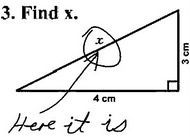DIY coin purse with a "kiss clasp"
 Here is a personalized, inexpensive project. I made five of these coin purses for my five nieces. Here's how to do it yourself, and what I would do differently next time.
Here is a personalized, inexpensive project. I made five of these coin purses for my five nieces. Here's how to do it yourself, and what I would do differently next time.These are two tutorials which were quite helpful. They don't agree on how to set the fabric into the frame.
Molly's sketchbook: a cute Japanese coinepurse
Purse frames de-mystified (aka Laundry Day clutch purse) - tutorial: they say "have you ever wondered how to make those lovely purses with clasp frames; dented, scratched, and ruined a metal frame/frames with those darn pliers; taken apart lots of purses to try to figure how in the heck they put them together...well step this way because we can help."
 I ordered my purse frames from Ah Kwok Buckles in Hong Kong. They sell a lot of really cool stuff.
I ordered my purse frames from Ah Kwok Buckles in Hong Kong. They sell a lot of really cool stuff. The price was reasonable, even with shipping. They came in quantities of five. I got five square ones and five curved ones.
The price was reasonable, even with shipping. They came in quantities of five. I got five square ones and five curved ones.Since then I've heard about this place: American Purse Supplies. Haven't tried them. (Haven't used up all my frames from last time.)

 So, first draw yourself a pattern, as roomy or long as you like, as long as the top edge conforms to the pattern given by the manufacturer. If you use square frames, the very top is flat, but you can angle the sides out as much as you want.
So, first draw yourself a pattern, as roomy or long as you like, as long as the top edge conforms to the pattern given by the manufacturer. If you use square frames, the very top is flat, but you can angle the sides out as much as you want. The pictures in the links I gave above are wonderful. Go have a look.
I made the template the size of the finished purse and did not include seam allowance - I added the seam allowance later.
Once you've drawn your purse, tape the drawing onto a piece of cardboard for a template (I always use cereal boxes).
 Trace your template onto lightweight fusible interfacing, four times for each coin purse you are making - then iron the interfacing pieces onto the fabric and use them as a guide for cutting out the fabric pieces. Since I was making five change purses, I cut out twenty identical pieces of interfacing. I ironed ten of them onto my lining fabric and cut around them, this time adding a seam allowance.
Trace your template onto lightweight fusible interfacing, four times for each coin purse you are making - then iron the interfacing pieces onto the fabric and use them as a guide for cutting out the fabric pieces. Since I was making five change purses, I cut out twenty identical pieces of interfacing. I ironed ten of them onto my lining fabric and cut around them, this time adding a seam allowance.  Then I ironed five more pieces of interfacing to the five different "outside' fabrics I was using. The last five pieces of interfacing will eventually be ironed onto your "outside' fabric, but not yet.
Then I ironed five more pieces of interfacing to the five different "outside' fabrics I was using. The last five pieces of interfacing will eventually be ironed onto your "outside' fabric, but not yet.Now trace your pattern (leaving room for the two seam allowances) onto the front fabric. I used very narrow grosgrain ribbon for the letters and stitched it onto the fabric by hand with tiny stitches. Some other system might be better.
After I embroidered the fabric, the backs were a bit messy, but I ironed the interfacing over them and that secured the messy threads.
Now sew the fabric pieces together, lining to lining, outsides to outsides, right sides in. If you "chain" them through your sewing machine (that is, don't cut each one off, just move on to the next one) it goes much faster. Only sew up to where the top goes into the frame. Leave the top unsewn! Now I had five lining bags and five outside-fabric bags
Sew across each corner of each little bag, at the bottom - this little triangle adds volume inside the purse. (You can chain them through your sewing machine.) The larger the corner you sew across, the boxier the finished purses will be.

Stuff a lining bag inside each "outside fabric" bag such that the seams show on the outside and the seams show on the inside.
Think of the unsewed perimeter as a mouth - start sewing at the front teeth and sew right around the side to the bottom teeth and keep going around ALMOST back to where you came from, but leave a gap to pull the purse through. And then pull the fabric through. There should be no raw edges showing anywhere, and there's a little unsewed bit at the top of one of the sides, but since you're about to glue it into the frame it will never show.
 Elmer's Ultimate Glue with Precision Tip was what was recommended to me. I love this glue. It expands, like gorilla glue, only it's more manageable. Expanding is good in this case because the fabric is thin and the channel is thick.
Elmer's Ultimate Glue with Precision Tip was what was recommended to me. I love this glue. It expands, like gorilla glue, only it's more manageable. Expanding is good in this case because the fabric is thin and the channel is thick. One method of making purses suggests stuffing a string up inside the frame. Good luck with that. I carefully prodded the fabric up into the channel hard against the glue and it worked ok - but if I do this again, I'll try cutting a piece of cardboard the shape of the channel and shoving that up in there with the fabric, or maybe I'll baste a piece of yarn to the mouth of the purse before I turn it right-side out.
Let the glue dry before you close the purses. Here are three of the five purses I made, as they sit with the glue drying.
One tutorial said to use pliers and gently crimp the purse frame closed. I complied, because it bothered me that the fabric was thin and the metal channel was wide, but it kind of wrecked the purses. Next time, instead of crimping, I will add cardboard inside the frame. Otherwise, I'm very pleased with how the purses came out.








 A few of my daughter
Melina's great posts:
A few of my daughter
Melina's great posts:








1 Comments:
I so enjoy the interesting things you make and then post online. I am a complete failure at "crafts" of all kind and admire the things you do.
Post a Comment
<< Home